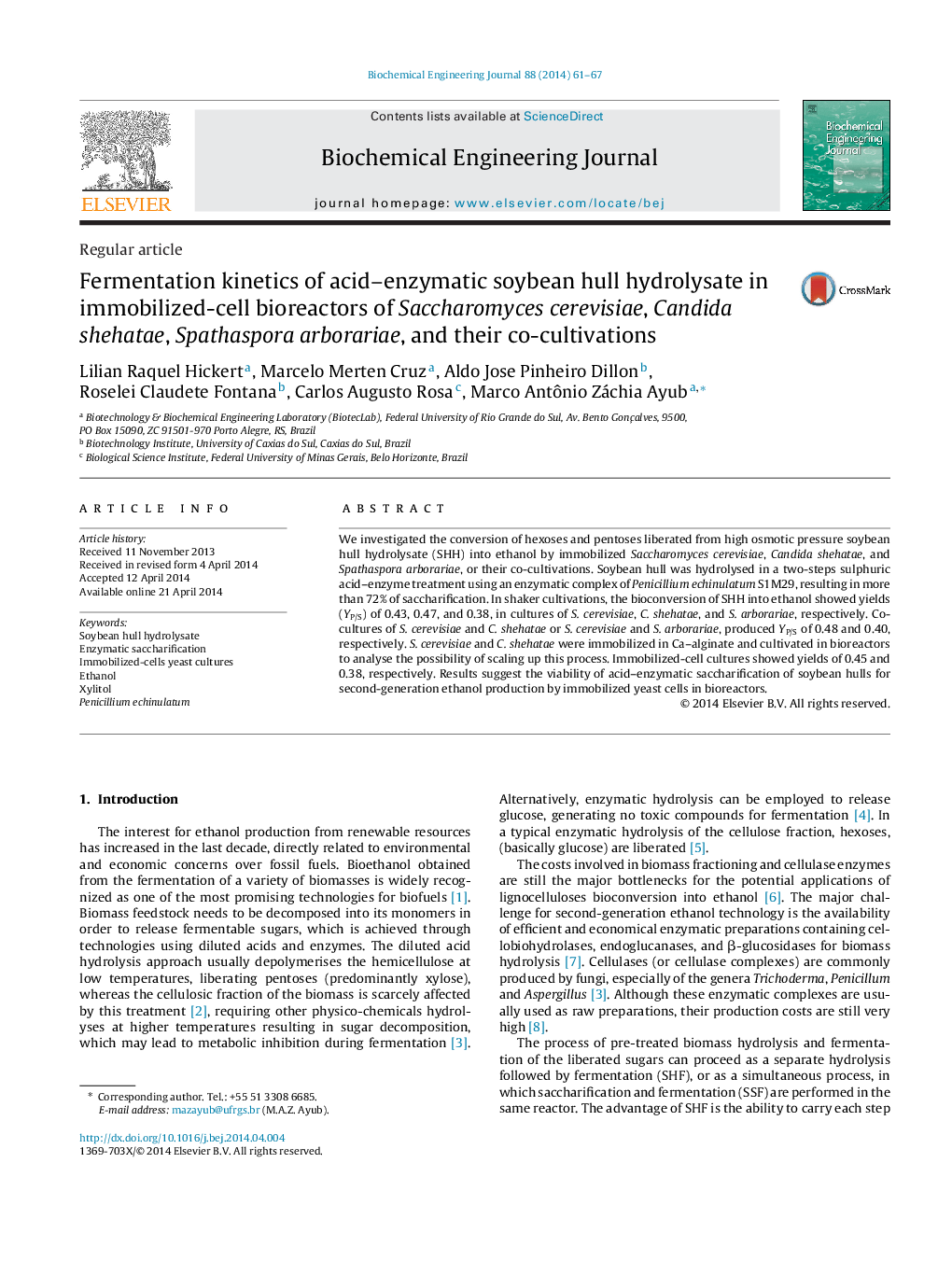| کد مقاله | کد نشریه | سال انتشار | مقاله انگلیسی | نسخه تمام متن |
|---|---|---|---|---|
| 3154 | 153 | 2014 | 7 صفحه PDF | دانلود رایگان |

• Conversion of high osmotic pressure soybean hull hydrolysate to ethanol was studied.
• Several immobilized yeasts or their co-cultivations were studied.
• Two-steps acid–enzyme treatment produced more than 72% saccharification.
• An enzymatic complex of Penicillium echinulatum S1M29 was produced.
• Free and immobilized-cells systems were tested.
We investigated the conversion of hexoses and pentoses liberated from high osmotic pressure soybean hull hydrolysate (SHH) into ethanol by immobilized Saccharomyces cerevisiae, Candida shehatae, and Spathaspora arborariae, or their co-cultivations. Soybean hull was hydrolysed in a two-steps sulphuric acid–enzyme treatment using an enzymatic complex of Penicillium echinulatum S1M29, resulting in more than 72% of saccharification. In shaker cultivations, the bioconversion of SHH into ethanol showed yields (YP/S) of 0.43, 0.47, and 0.38, in cultures of S. cerevisiae, C. shehatae, and S. arborariae, respectively. Co-cultures of S. cerevisiae and C. shehatae or S. cerevisiae and S. arborariae, produced YP/S of 0.48 and 0.40, respectively. S. cerevisiae and C. shehatae were immobilized in Ca–alginate and cultivated in bioreactors to analyse the possibility of scaling up this process. Immobilized-cell cultures showed yields of 0.45 and 0.38, respectively. Results suggest the viability of acid–enzymatic saccharification of soybean hulls for second-generation ethanol production by immobilized yeast cells in bioreactors.
Journal: Biochemical Engineering Journal - Volume 88, 15 July 2014, Pages 61–67